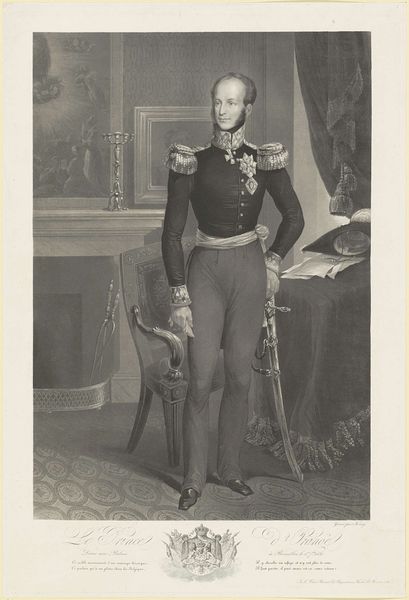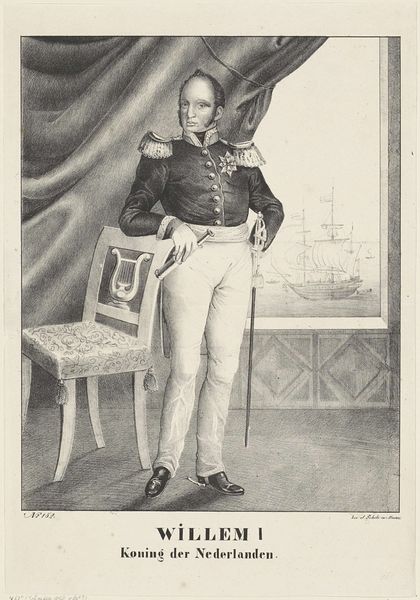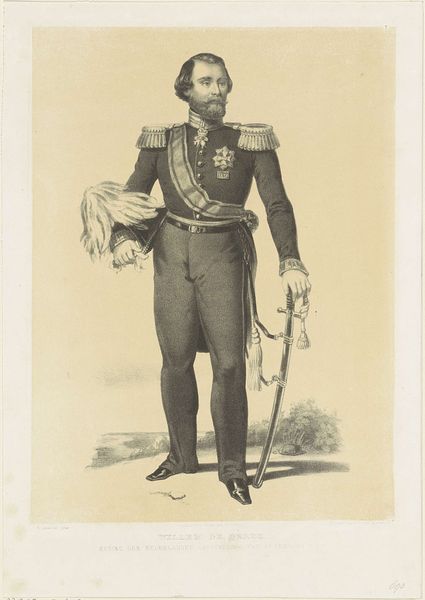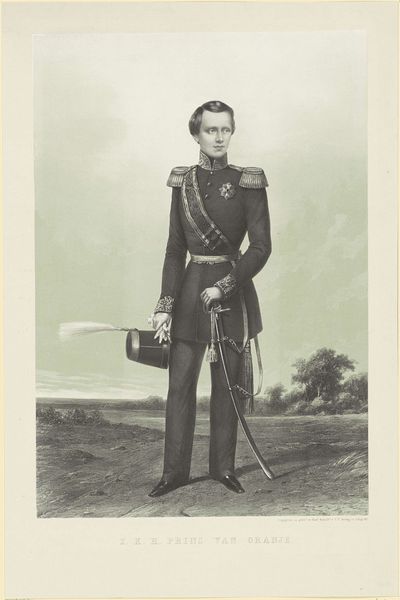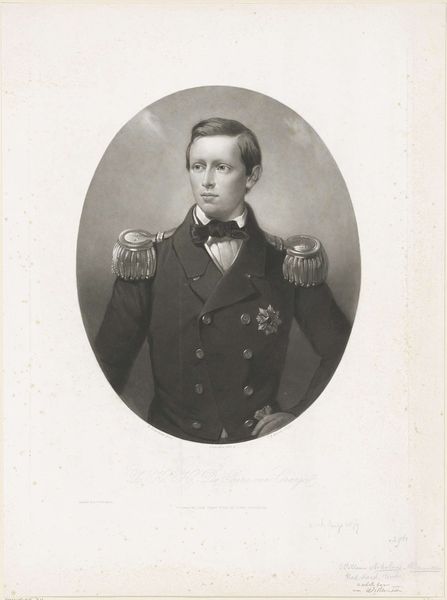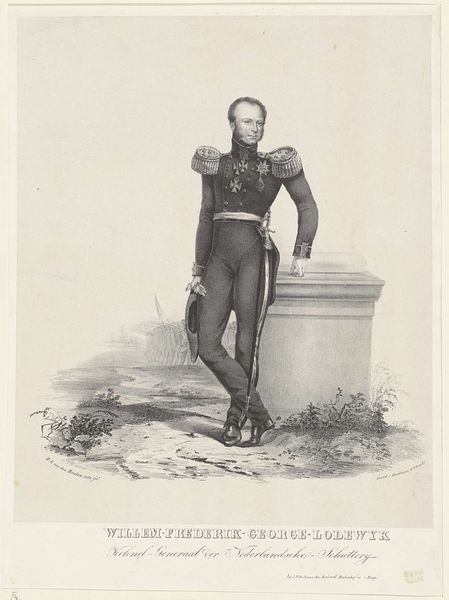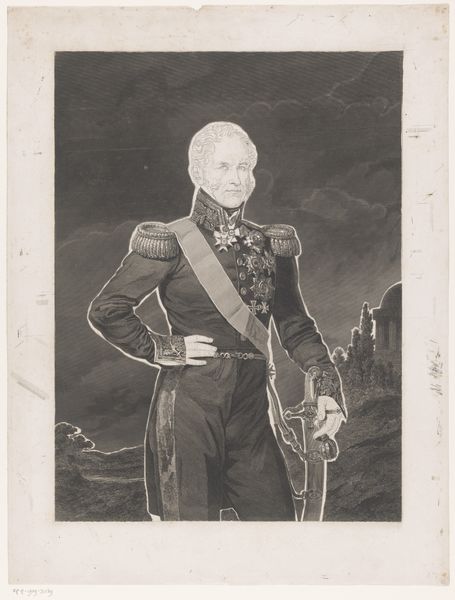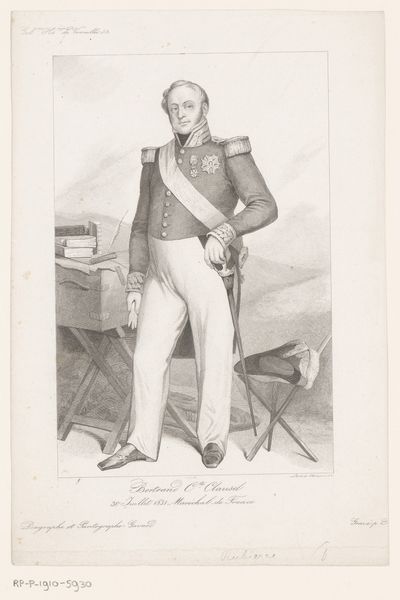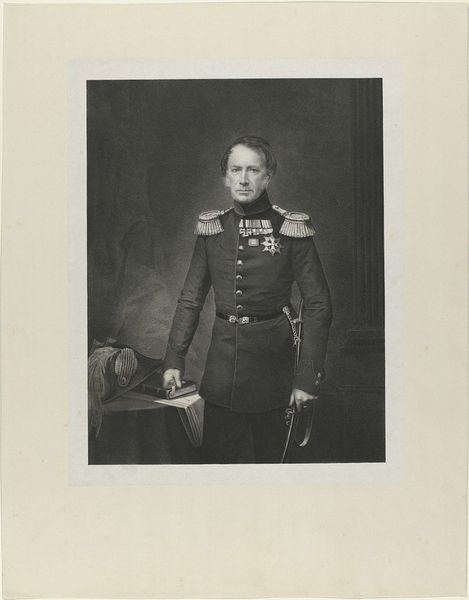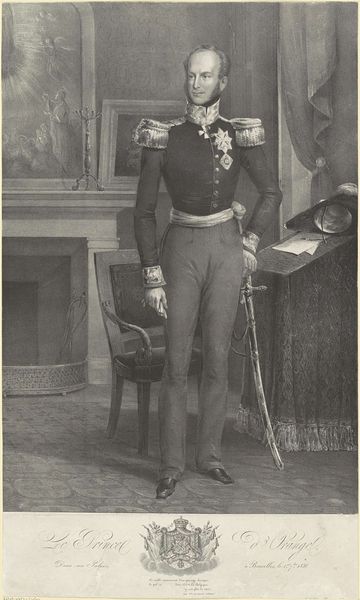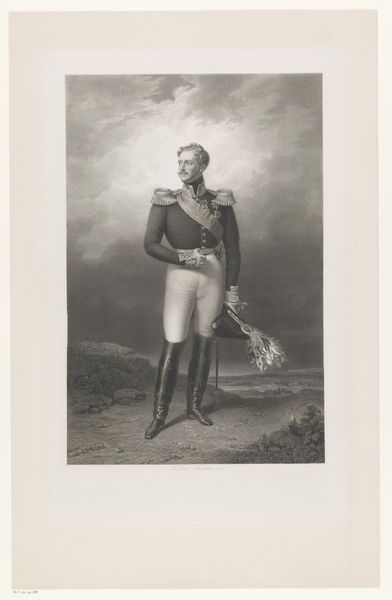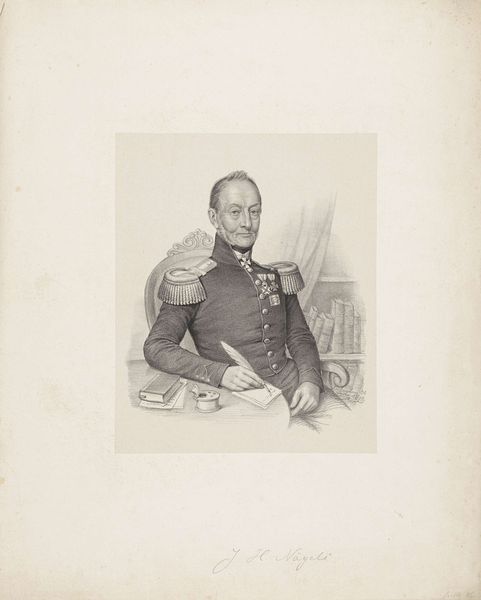
print, engraving
#
portrait
#
neoclacissism
# print
#
history-painting
#
engraving
Dimensions: height 636 mm, width 425 mm
Copyright: Rijks Museum: Open Domain
Curator: Here we have a portrait of Willem I Frederik, King of the Netherlands, created by Johann Hürlimann around 1815 to 1830. The medium is listed as print, specifically engraving. What's your initial reaction to it? Editor: Well, it's immediately striking how...crisp the lines are. It feels very formal, stiff almost. The gray tones create a sense of seriousness. You know, almost imposing in a way. Curator: The choice of engraving aligns with the neoclassical period's appreciation for clarity and order. The medium itself would have been relatively accessible, enabling wider distribution of the king's image. Think about the impact of making royal portraiture a commodity for display. Editor: Absolutely, that brings a really interesting angle. So the printmaking makes his image broadly available, but it also reduces it. Engraving, as a practice, emphasizes technical skill, careful replication, the craft itself and I suppose, makes this image less elite, doesn't it? Curator: Precisely. Hürlimann had to consider what aspects of power to highlight, understanding how the medium itself democratized the royal image to some extent. Notice the detail given to his garments. Editor: The uniform does appear quite important, and that star or medal he's wearing, looks heavy in weight! The tools that make it! And look at his fingers, too - you can almost see his pinky ring there. These small signifiers communicate both power and privilege. How the engraver captures that! The desk implies his command and he is at work - that means this isn't about lineage but a man in motion making that world. Curator: Indeed. This artwork acts as both an object of artistic skill, which signifies high culture, while acting also as propaganda disseminated for political goals, which takes part in real shifts of power throughout society. Editor: Well, that does broaden the context beyond just a depiction of royalty, doesn't it? Seeing it as part of a wider distribution and reflection of that man is more poignant for me. Curator: Understanding how these prints circulated allows us to understand that history differently. Editor: Thank you, Curator. A good king to remember for a time!
Comments
No comments
Be the first to comment and join the conversation on the ultimate creative platform.
